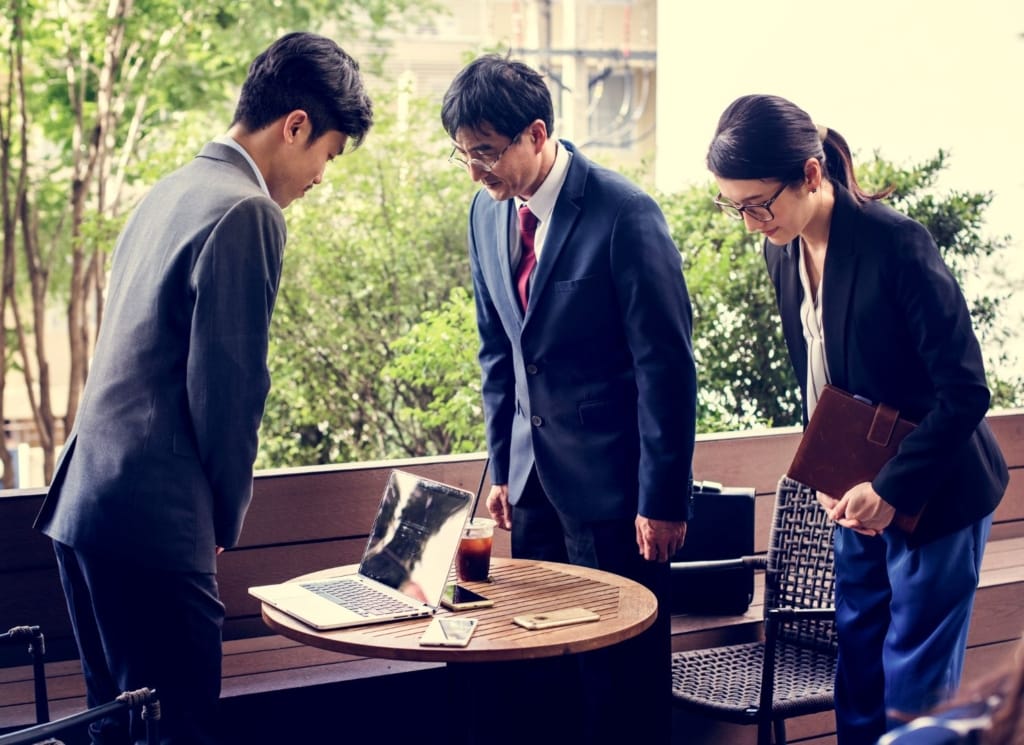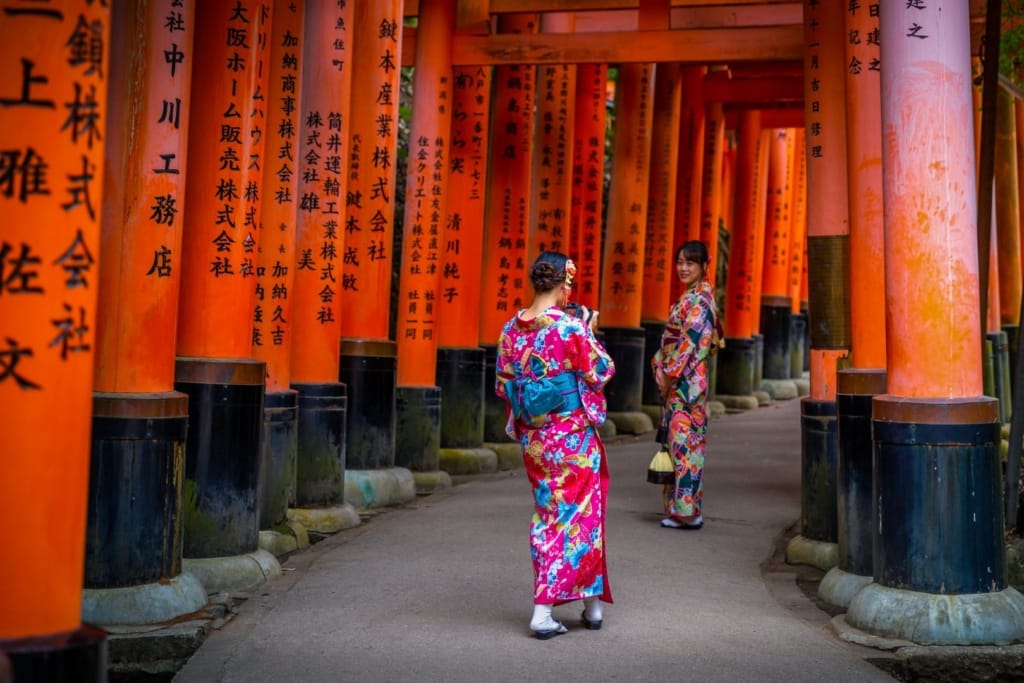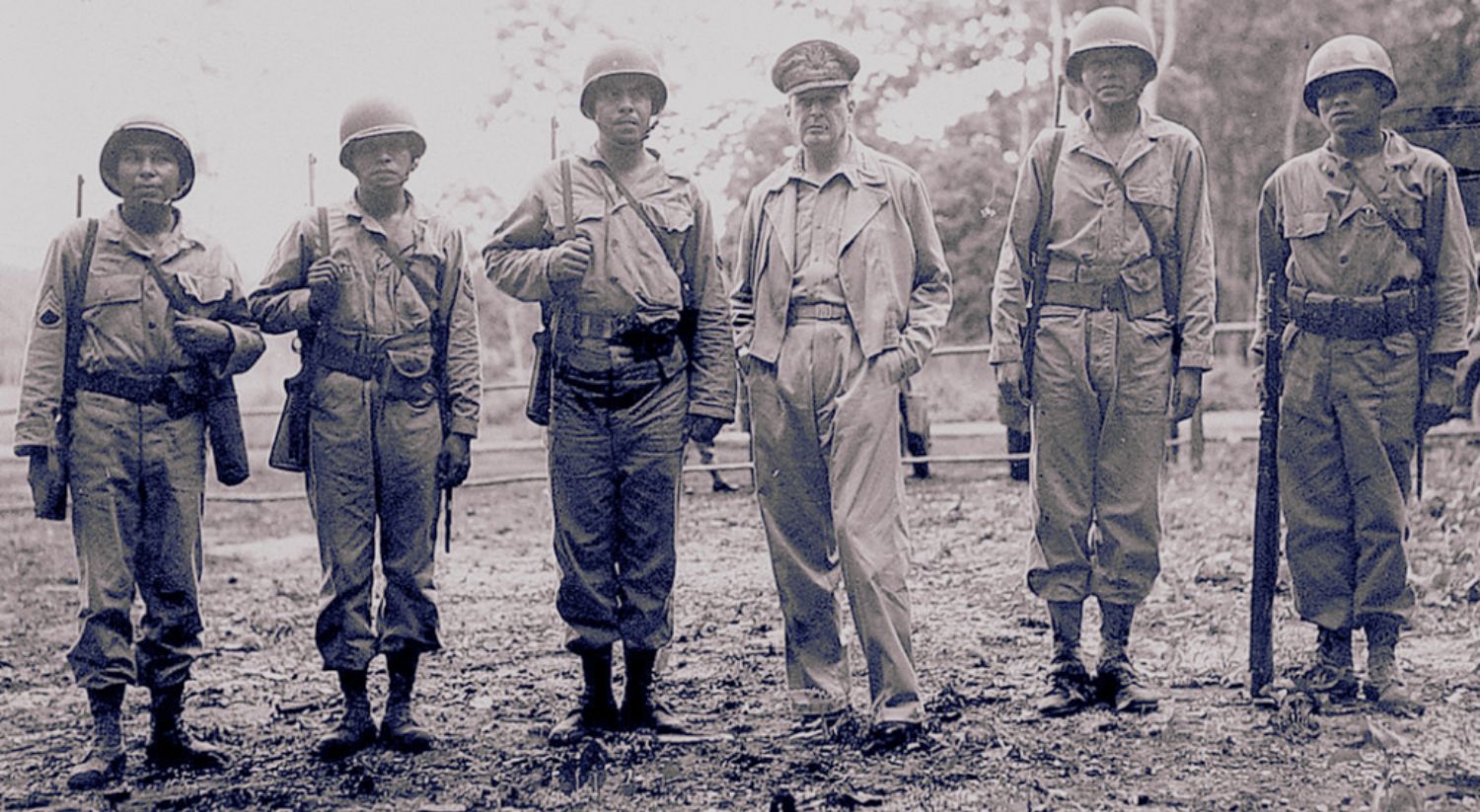
If you’re planning a trip to Japan, this brief introduction to Japanese for beginners will make your journey a truly enriching experience. Japanese is one of the most widely spoken languages in the world, serving as the primary means of communication for over 120 million people. Furthermore, it is an ancient language that reflects the culture of a country as extraordinary as Japan.
As you’ll discover in this beginner’s guide to Japanese, the language is deeply intertwined with Japanese culture. At its core, Japanese includes expressions of respect, phrases used when speaking with strangers, and highly formal words. Additionally, it is rich in terms that reference unique Japanese traditions that are not widely known in the West.
For this reason, this introduction to Japanese for beginners will be more than just a language lesson. It will serve as a gateway to one of the most fascinating cultures on the planet.
Nihongo o benkyō shimashou… Let’s learn Japanese!
Why learn Japanese for beginners?
There are countless reasons to learn a language, but they can usually be boiled down to two: because you want to or because you need to. For instance, you might need to learn Japanese as a beginner for professional reasons or because you’re conducting business with someone from Japan. Similarly, you may want to learn it to better understand the language for an upcoming trip or other specific purposes.
It’s natural to want a basic understanding of the Japanese language if you’ll be interacting with Japan or its people. However, learning a language isn’t always driven by necessity. Many people take it up to broaden their knowledge or as part of their personal growth journey.
Every reason for learning Japanese for beginners is valid and beyond question. Likewise, each individual has a unique motivation, which makes perfect sense to them. What’s clear is that exploring such an ancient and mystical culture is well worth the effort of learning its language.
A reflection of Japan’s ancient history
According to anthropologists, language is a living reflection of a region’s culture, customs, and historical significance. And if there’s one thing that’s vibrantly alive… It’s Japanese culture!
Japan is a land where tradition seamlessly blends with cutting-edge innovation. It’s a country that embraces the future while staying deeply connected to its heritage and past. Let’s explore some of the most significant aspects of Japanese culture as reflected in its language.

Body language: When the body speaks Japanese
The first lesson you should learn in Japanese for beginners is that communication goes beyond words. It’s crucial to understand that language isn’t limited to verbal expression—body language and gestures are essential elements of Japanese culture. Familiarizing yourself with these displays of courtesy will help you integrate better and show respect for local customs. Here are some of the basics:
The bow: A symbol of respect and humility
The bow, or ojigi, is one of the most important gestures in Japanese culture. It is used to greet, say goodbye, express gratitude, or apologize. Depending on the context, the angle and duration of the bow can vary. For instance, a slight bow suffices for a casual greeting, while a deeper bow indicates greater respect or a sincere apology.
Practicing the bow will not only help you understand its nuances but also earn the trust of the local people. Remember to avoid direct eye contact while bowing, as it can be perceived as challenging or disrespectful.
Other common gestures in japanese communication
Gestures often accompany verbal communication to emphasize or clarify a message. For example:
- Pointing to your nose: This is a way to refer to yourself, unlike in many Western cultures, where people often point to their chest.
- Waving your hand in front of your face: This gesture, similar to fanning, indicates that something is inappropriate or a mistake.
- Crossing arms in an “X”: This signifies polite rejection.
- Using both hands to give and receive objects: This shows respect and attentiveness, a practice deeply rooted in Japanese etiquette.
Respect for personal space
Avoid unnecessary physical contact when interacting with others. Personal space is highly valued in Japan, so gestures like hugs or pats on the back are uncommon, except among close friends. Being mindful of this can help you avoid awkward or offensive situations.
What else should I know in Japanese for beginners?
Respect is central to the Japanese language and culture. Beyond body language, the way respect is expressed through verbal and non-verbal communication is key for beginners. Let’s explore some of the most important aspects of showing respect in Japanese culture.
Respect for elders: A Fundamental element in Japanese for beginners
As previously mentioned, the Japanese language beautifully blends culture, lifestyle, and worldview. In Japanese culture, the past doesn’t carry the same connotation as in the West. For the Japanese, the past is not a forgotten or dead time; it lives on through traditions. For this reason, elders are considered representatives of wisdom and are therefore worthy of deep respect.
Unlike some Western cultures, in Japan, elders are revered as teachers or Kyōshi. In fact, one of Japan’s most celebrated holidays is Keirō no Hi, or “Respect for the Aged Day.” When greeting elders, younger individuals bow as a sign of respect and admiration.
As a result, it is uncommon for younger people to speak casually or overly familiarly with their elders. Generally, people address older individuals or those in positions of authority (such as a boss) in a more formal manner.
For instance, it is customary to add the honorific suffix -san after a person’s name, like “Tanaka-san.” For those deserving the highest respect, the suffix -sama is used, such as “Suzuki-sama.” Here are a few examples:
Honorifics: A key feature of the japanese language
When learning Japanese for beginners, understanding how to address others is one of the fundamental lessons. In Japan, honorifics reflect social relationships and are crucial in determining the tone of interactions. Here are some of the most common ones:
- “-san”: Used to show general respect.
- “-sama”: Indicates a higher level of respect or reverence.
- “-kun”: Used for young men or subordinates in a professional setting.
- “-chan”: An affectionate form, often used for children or close friends.
Honorifics are added to the end of a person’s name and are essential for establishing the appropriate tone in any interaction. Additionally, using someone’s surname rather than their first name is common, reflecting respect for their family and ancestry.

Respect, hierarchy, and courtesy: Core values in Japanese for beginners
Japanese culture is renowned worldwide for its strict adherence to courtesy and manners. These values aren’t reserved solely for formal settings or prestigious occasions—they are practiced daily.
In the workplace, for instance, rank and hierarchy are evident in how individuals are addressed. When entering an office, you can immediately identify the boss based on how others speak to them. In professional settings, it’s customary to use a form of honorific language known as Keigo. This language includes two main categories:
- Sonkeigo (respectful language): Used to elevate the listener.
- Kenjougo (humble language): Used to humble oneself in deference to the listener.
For example, instead of simply saying “thank you” (arigatou), you might say arigatou gozaimasu, a more polite expression. Additionally, titles often replace names in formal contexts. For instance, a company president is referred to as shachou, while a department manager might be called kakarichou, followed by -san. This reflects the importance of one’s role or title in Japanese culture—an invaluable lesson for anyone working with Japanese professionals.
How to address strangers in Japanese for beginners?
When meeting someone new in Japan, it is essential to demonstrate courtesy and use formal language or Keigo. Adding -san after the surname is a basic rule. For example, if you meet someone named Suzuki, you would address them as “Suzuki-san.”
In professional or highly formal situations, phrases like hajimemashite (“nice to meet you”) are commonly used during introductions. Similarly, using yoroshiku onegaishimasu expresses gratitude and sets the tone for a positive relationship.
The Japanese highly value discretion and politeness. In formal interactions, it’s best to avoid overly personal questions, as privacy is a deeply respected aspect of Japanese culture.
As you can see, learning Japanese for beginners goes far beyond memorizing a few words. It’s a rich language full of cultural nuances and symbolic elements that are often absent in many Western languages. But don’t worry! Here are a few basic expressions to help you navigate your journey in Japan successfully.
Greetings, farewells and basic manners
| Greetings & farewells | |
|---|---|
| Greetings | |
| Formal Greetings | Translation |
| おはようございます (Ohayou gozaimasu) | Good Morning |
| こんにちは (Konnichiwa) | Good Afternoon |
| こんばんは (Konbanwa) | Good night |
| Casual Greetings | Translation |
| おはよう (Ohayou) | Good morning (casual) |
| こんにちは (Konnichiwa) | Hello |
| どうも (Doumo) | Hi! |
| Farewells | |
|---|---|
| Formal Farewells | |
| Expression | Translation |
| さようなら (Sayounara) | Good bye |
| おやすみなさい (Oyasuminasai) | Good night |
| 失礼します (Shitsurei shimasu) | Excuse me |
| Casual Farewells | |
| Expression | Translation |
| じゃあね (Jaane) | See you! |
| またね (Matane) | See you soon |
| バイバイ (Baibai) | Bye |
| Please & Thank you | |
|---|---|
| Expression | Translation |
| お願いします (Onegaishimasu) | Please |
| ありがとう (Arigatou) | Thank you |
| ありがとうございます (Arigatou gozaimasu) | Thank you very much |
| どういたしまして (Dou itashimashite) | You are welcome |
| Apologies | |
| Expression | Translation |
| ごめんなさい (Gomennasai) | I’m sorry |
| すみません (Sumimasen) | Apologies |
| 申し訳ありません (Moushiwake arimasen) | I am sorry (formal) |
| 大丈夫です (Daijoubu desu) | It’s ok |
Introductions
| Introductions | |
|---|---|
| Expression | Translation |
| 私の名前は…です (Watashi no namae wa…desu) | My name is… |
| お名前は何ですか? (Onamae wa nan desu ka?) | What is your name? |
| どうぞよろしくお願いします (Douzo yoroshiku onegaishimasu) | Nice to meet you |
| Basic answers | |
| Expression | Translation |
| 私は…から来ました (Watashi wa…kara kimashita) | I’m from… |
| 私は…に住んでいます (Watashi wa…ni sundeimasu) | I live in… |
| 元気です、ありがとう (Genki desu, arigatou) | I’m ok thank you |
| あなたは? (Anata wa?) | And you? |
Needing help
| Emergencies | |
|---|---|
| Ask for help | |
| 助けて! (Tasukete!) | Help! |
| 手伝ってもらえますか? (Tetsudatte moraemasu ka?) | Can you help me please? |
| 警察を呼んでください (Keisatsu o yonde kudasai) | Please call the police! |
| 火事です! (Kaji desu!) | Fire! |
| Medical issues | |
| 医者が必要です (Isha ga hitsuyou desu) | I need a doctor |
| 最寄りの病院はどこですか? (Moyori no byouin wa doko desu ka?) | Where is the closest hospital? |
| ここが痛いです (Koko ga itai desu) | I’m in pain here |
| 薬が必要です (Kusuri ga hitsuyou desu) | I need medicine |
| …にアレルギーがあります (…ni arerugii ga arimasu) | I’m allergic to… |
| 救急車を呼んでください (Kyuukyuu-sha o yonde kudasai) | Please call an ambulance |
Use technology to your advantage
With Talkao translation apps, you can harness the power of technology to your advantage. Express yourself like a native Japanese speaker by using your mobile device as a translator with the Talkao Translate app. Additionally, you can rely on the Talkao Dictionary to explore thousands of words, phrases, and expressions in Japanese. This incredible tool allows you to translate from Japanese to any other language in just seconds.
But that’s not all—thanks to the innovative Talkao Augmented Reality app, you can learn how to say, write, and use the names of objects or places around you. This amazing feature lets you contextualize any conversation effortlessly, even if you’re not a tech wizard.
Worried about mastering the Japanese alphabet? The Talkao Camera Translator app has you covered. It can translate any text, sign, or even entire books written in Japanese into more than 125 languages.
Take the plunge and start learning Japanese—it’s an experience you won’t regret!










Newsletter